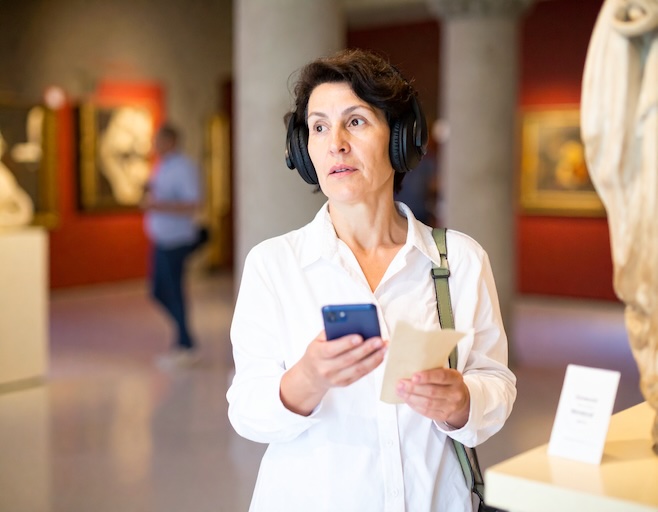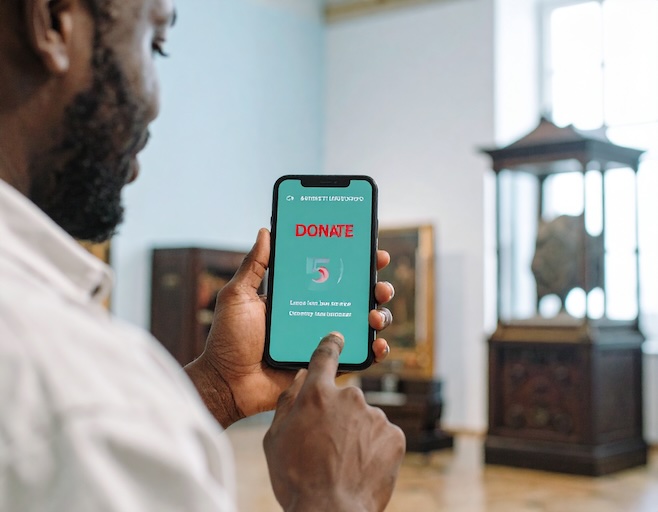 August 18, 2025
August 18, 2025
Audio guides don’t just tell stories – they time your invitation to give. When visitors hit a moment of wonder, your guide can turn that feeling into action with a single, well-placed prompt.
The “Moment of Wonder” Conversion Framework
- Spark (5–7s): Hook or reveal that creates surprise or pride.
- Anchor (10–15s): Tie the emotion to meaning (“why this matters now”).
- Invite (10–20s): Clear, specific, low-friction ask with impact.
- Assist (UI): One tap, three preset amounts, Gift Aid checkbox.
- Thank (5–8s): Gratitude + optional monthly upsell.
Formula: Wonder → Meaning → Ask → Assist → Thank
Why audio guides are the best engine for donations

- Timing control: You decide exactly when the ask appears—right after the wow.
- Personal space: Visitors hear the appeal privately; no pressure, higher intent.
- Micro-personalization: Different tracks can speak to families, tourists, or enthusiasts.
- Data you can act on: Track starts/completions and donation conversions per object.
Sample donation scripts (drop-in, 10–20 seconds)
Script A – Impact-First (≈14s)
“If this moment surprised you, you’re not alone. A £5 gift buys the archival sleeve that protects pieces like this. Tap Donate—it takes 30 seconds.”
Script B – Story-Loop (≈18s)
“From war to weather, survival wasn’t guaranteed. Help us keep it on display: £3, £5, or £10. Gift Aid adds 25% at no extra cost.”
Script C – Gratitude-Led (≈12s)
“Thanks for listening. If you can, add £5 to preserve stories like this one. Tap Donate—secure and quick.”
Placement & timing (where “wonder” happens)
- Right after the reveal in the audio track (not just the end).
- Discreet QR/NFC next to the caption (eye-level, right of label).
- Exit & café for reinforcing the same message when visitors pause.
- Kids/family trails—make the ask playful but optional.
30-Day Pilot Plan (museum-friendly, low lift)
Week 1 – Choose & script
Pick 12 highlight objects · Write 60–90s tracks · Draft 3 impact lines for £3/£5/£10.
Week 2 – Record & build
Record in a quiet room (USB mic) · Upload audio · Add donate CTA to each track.
Week 3 – Label & test
Print small QR/NFC labels · Staff/volunteer walkthrough · Fix confusing steps.
Week 4 – Launch & learn
Enable Gift Aid · Review analytics (starts, completions, donate clicks, gifts) · Adjust scripts.
Metrics that matter
- Track completion rate (per object)
- CTA view → click rate
- Click → gift conversion & median gift
- Gift Aid opt-in
- Monthly upgrade rate
Objections & quick answers
“Won’t it be noisy?”
BYOD with headphones; bone-conduction options keep ears open to the gallery.
“Our Wi-Fi is patchy.”
Use a PWA with offline caching; place first QR near good signal for initial load.
“We’re short on time.”
Start with Top 12; record in an afternoon; publish, then iterate.
“Is it worth it?”
Audio-timed asks consistently outperform posters and exit tins because they coincide with peak emotion.
Final word

Your collection already creates moments of wonder. An audio guide aligns the invite to give exactly with those moments—turning emotion into long-term care, new programs, and a healthier bottom line. Start with twelve stories, one clear ask, and a 30-day pilot.



